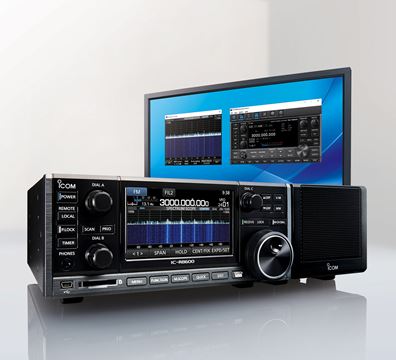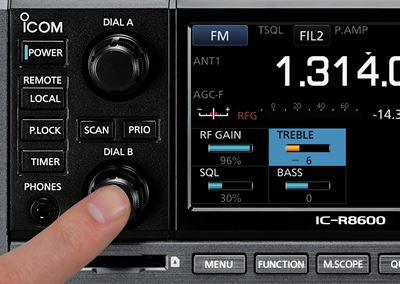Everything you needed to know about Radio Receivers/Scanners
Tuning into the airwaves for new and interesting transmissions has fascinated enthusiasts since the very earliest days of radio. As a result of advances in computer and radio technology, the equipment packed radio rooms of the past are now replaced by scanning receivers sometimes just the size of a mobile phone. The radio scanner/receiver has the ability to scan a very wide range of radio frequencies and lock on to any transmission that it receives. You could be listening to a Jumbo jet flying at 40,000ft over Paris or maybe a short wave broadcast from Moscow.So what can radio receivers/scanners pick up?

• Listen to marine radio traffic in ports and harbours.
• Tune into international broadcast stations.
• Listen to hobbyist radio such as Citizens Band (CB) and Amateur radio.
• Receive broadcast transmissions, i.e. BBC and local radio.
• Receiving communications from the Space Station
• High altitude amateur balloons www.arhab.org/ and APRS tracking
• NOAA orbiting weather satellite reception.
• Interfacing with computer/the internet for remote access (IC-R8600)
• Monitor PMR bands that might include security, taxis radio traffic.
• Listen to Licence free/PMR446 radios
What types of radio receivers/scanners are there?
Scanners essentially come in two types, handheld and base/mobile, although there are PC-based units available. Deciding which to buy is simply a case of knowing how and where you will use the receiver/scanner most and your budget. Those that prefer to scan the airwaves in the comfort of their own home should invest in a home-based unit. If you like the idea of wandering about outdoors, then a handheld unit is the obvious choice. If, however, you are just starting out in scanning and are not sure which of these options you are likely to prefer, then buying a handheld unit is probably the way forward, as this enables you to use it both indoors and outdoors. The predominant modes are AM and FM, although there are others such as USB (upper sideband) and LSB (lower sideband). The USB and LSB modes are mostly used in the HF band (3-30MHz) by amateur radio enthusiasts in particular, but also marine, aircraft and others. However, it is the FM mode that will provide most of the action with a few exceptions such as the Air Band (108-136 MHz), which uses AM. What can and cannot be monitored legally?This is a thorny question that is complicated by the official blind eye that is so often turned towards such activities. Frequencies that can be monitored without fear of prosecution include radio, TV broadcasts, amateur radio transmissions and a wide range of overseas transmissions on the short wave bands. Short wave signals often originate overseas and normally consist of commercial, military, news service and marine transmissions. Aircraft and marine communications, where signals contain mainly navigational information are relatively safe, and authorities tend to turn a 'blind-eye' for tuning into these frequencies. Although they have moved to encrypted digital transmission, frequencies used by police, fire brigade, ambulances and telephone calls, are large NO GO areas. Monitoring the police is inviting trouble. You also run the risk of prosecution if your scanner is obtained by the authorities and shows illegal channels in its memory.
Many countries have regulations controlling the sale of scanners that cover certain frequency bands. The UK is, at present, free from such restrictions and it is in the interest of all scanner users to use them responsibly to avoid restrictive legislation being introduced.
Best practice when using a radio receiver/scanner

Available Icom Receivers/Scanners
Scanners or radio receivers are still popular, and with the development of digital radio receivers, you can expect to pick up the burgeoning level of new digital radio traffic. Icom has two dedicated receivers/scanners available from the pocket sized IC-R6 Handheld to the IC-R8600 which can pick up digital D-STAR, P25, NXDN and dPMR digital (conventional) transmissions. Our final adviceIf you are new to the radio-scanning scene then take care to read the manual and make yourself thoroughly familiar with how your unit operates. Be warned, searching for transmissions can be a frustrating business at first, but don’t give up. Instead, take your time and keep looking, and soon you will have a list of interesting frequencies stored up for you to return to.

